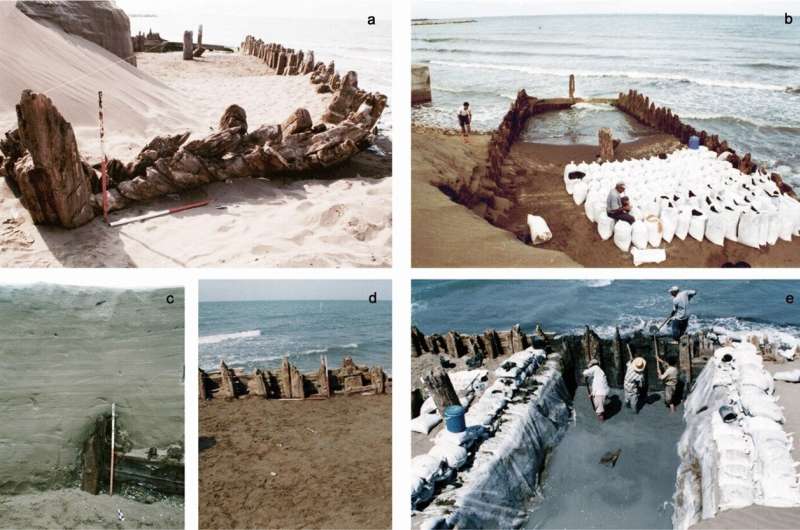Archaeologists from the International Association for Mediterranean and Oriental Studies, Italy, along with the Underwater Archaeology Faculty in Tehran, have detailed the findings from the excavation of a wooden shipwreck along the southern coast of the Caspian Sea in Mazandaran, Iran. Analysis of radiocarbon-dated wood samples and plant remains indicated the vessel most likely dates to the late 18th century or early 19th century.
More information:
Lorenzo Costantini et al, The Shipwreck of Zaghemarz, Mazandaran, Iran: Archaeology, Archaeobotany and Absolute Dating of an Eighteenth-Century Vessel of the Caspian Sea, Journal of Maritime Archaeology (2024). DOI: 10.1007/s11457-024-09430-6
Citation:
Russian shipwreck in Iran reveals centuries-old Caspian Sea cargo (2024, December 31)
retrieved 31 December 2024
from https://phys.org/news/2024-12-russian-shipwreck-iran-reveals-centuries.html
This document is subject to copyright. Apart from any fair dealing for the purpose of private study or research, no
part may be reproduced without the written permission. The content is provided for information purposes only.
Building a temporary sandbag barrier against wave erosion allowed careful excavation of the site. Stratigraphic layers were documented, revealing 43 sedimentary layers that documented its burial over centuries. Waterlogged wood samples underwent thin-section and environmental scanning electron microscopy for species identification.
The Caspian Sea is surrounded by five countries that have long used it as an important trading route. The ship, believed to be a three-masted vessel, was likely abandoned in the late 18th or early 19th century. Over two seasons, excavations uncovered structural elements of the hull, masts, and remnants of its cargo, offering researchers vital clues as to its possible origin through cargo composition and construction practices.
Radiocarbon dating was conducted on three wood samples and buckwheat seeds from a basket found in the ship’s lowest compartment to model the ship’s likely construction, repair, and wrecking timelines. Botanical remains were processed through water sieving and examined under microscopes to identify species.

